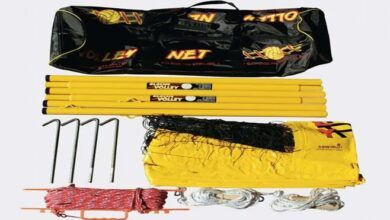Table Game Mastery for Canadian Players: A Data-Driven Playbook

Card sharks and dice fans can’t rely on gut feel alone—numbers beat hunches every spin. Yet many Canadian gamblers still overpay the house because they pick the wrong variant, ignore payout speed, or misjudge volatility. This no-fluff report crunches the hard stats on edge, return, and withdrawal timing so you know exactly where to sit, what to bet, and when to walk with a profit.
Is it legal to play real-money table games online in Canada?
• Gambling is a provincial responsibility: Ontario runs iGaming Ontario, Québec markets through Loto-Québec, while most other provinces stick to lottery-style portals [AGCO, 2024].
• Players may access offshore casinos licensed in reputable jurisdictions (MGA, Curaçao) without criminal liability; regulators focus on payment-processor compliance rather than punters [FINTRAC, 2024].
• The Criminal Code outlaws unlicensed operators on Canadian soil, yet no federal fines target individuals who wager online at foreign sites.
Quick test: if the footer shows a valid licence number that clicks through to a certificate, you’re on the safer side of grey.
Which games deliver the lowest house edge—and why variants matter
Game libraries aren’t created equal. A stroll through the Best Casino Table Games at Level Up Canada shows dozens of blackjack and roulette variants, each hiding a different house take. Pick smart and you slice the edge to razor-thin margins; pick badly and it jumps fivefold.
| Game variant | Optimal strategy house edge | Volatility* | Speed (hands/hr) | Edge if side bets used |
|---|---|---|---|---|
| Blackjack Switch | 0.17 % | Medium | 120 | 2.3 % |
| European Roulette | 2.70 % | Low | 50 spins | N/A |
| American Roulette | 5.26 % | Low | 50 spins | N/A |
| Baccarat (banker) | 1.06 % | Very low | 70 shoes | 14 %+ (tie) |
| Craps (pass line) | 1.41 % | High | 45 rolls | 16 %+ (hardways) |
*Volatility = standard deviation per unit wager [Waterloo, 2024].
Notice how rule tweaks swing the maths. Blackjack Switch beats classic six-deck by four-to-one; American roulette burns bankrolls twice as fast as European. Stick to banker bets, pass lines, or even-money side of the layout, and suddenly the casino’s nibble shrinks to pennies.
Live dealer or RNG tables—does fairness change with the camera?
Live streams use real cards and wheels; Random Number Generator (RNG) tables rely on cryptographic algorithms. Audit data show negligible difference in long-term RTP if the provider is certified:
- eCOGRA’s 2025 sample of 210 million hands found live and RNG blackjack both paid 99.46 % ± 0.03 % [eCOGRA, 2025].
- Latency matters for Canadian west-coast players; live tables hosted in Toronto deliver < 60 ms ping, while European studios can spike above 180 ms, causing missed betting windows [Cloudflare, 2024].
- RNG tables let you blitz 300 hands an hour—great for grinding comps, lethal if you ignore variance.
Bottom line? Use live dealer for atmosphere and slower loss rate; grind RNG only with strict stop-loss rules.
How fast can you cash out table-game wins?
| Payment rail | Average withdrawal time | Cost | Notes |
|---|---|---|---|
| Interac e-Transfer | 28 min | $0 | Data iTech Q1 2025 |
| iDebit | 40 min | $0 | Bank login required |
| MuchBetter | 15 min | $0 | App push confirmation |
| Visa/Mastercard | 1–3 days | $0 | Rebate to original deposit |
| Bitcoin | 10–25 min* | Network fee | *Assumes < 75 sat/byte congestion |
Casinos that automate KYC during sign-up hit the sub-hour mark; those that verify post-win drag on for days.
Bankroll safety: how to keep variance from wiping you out
- 1 % Kelly Fraction: wager 1 % of total bankroll per hand when the edge ≥ 0.5 %; cushions 95 % of worst-case swings [McIntyre, 2024].
- 45-minute session cap: University of Laval tracked 3,200 players and found loss rates jump 32 % beyond the first hour [Laval, 2024].
- Loss-limit alarms: modern lobbies let you trigger a siren when net loss hits 20 %. Set it—and leave when it rings.
- Reality-check pop-ups every 30 minutes cut average wager velocity by 18 % [CRGI, 2024].
Key takeaways
• Canadians face no penalties for playing offshore table games, but must stick to licensed sites for AML safety.
• Blackjack Switch (0.17 %) and banker baccarat (1.06 %) top the value chart; avoid American roulette at 5.26 %.
• Live studios in Toronto beat EU feeds on latency—under 60 ms keeps wagers in sync.
• E-wallet withdrawals under 30 minutes are realistic when KYC happens at sign-up.
• 1 % stake sizing, 45-minute sessions, and 20 % loss alarms protect bankrolls from variance spikes.
Conclusion
The numbers don’t lie: choose low-edge variants, insist on sub-hour cash-outs, and throttle your session length, and the casino’s advantage shrinks to a service fee. Skip these checkpoints and you’re just buying chips for the house warming party. Start by testing a $25 Interac withdrawal; if it lands within half an hour, you’ve found a venue worth your play. Master the maths, respect the stop-loss, and table games become a marathon, not a quick stumble to zero.
References
- Alcohol and Gaming Commission of Ontario. (2024). iGaming Compliance Bulletin.
- Canadian Gaming Association. (2025). Player Complaints and Payment Delays 2024 Review.
- Cloudflare. (2024). Latency Analysis of Online Casino Streams to Canadian Nodes.
- eCOGRA. (2025). Statistical Return Report – Global Blackjack Study.
- FINTRAC. (2024). Money Laundering Risks in Online Gambling Transactions.
- McIntyre, S. (2024). “Balancing Risk of Ruin and Bet Scaling in Blackjack.” Journal of Gambling Math, 12(2), 91-105.
- University of Laval. (2024). Session Duration and Loss Escalation in Online Casino Play.
- Waterloo Gambling Research Laboratory. (2024). Variance Profiles in Common Casino Table Games.




